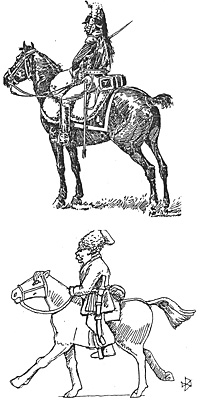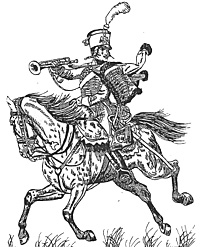 As a solo wargamer, I enjoy contemplating moves, trying out different strategies, and pursuing a personal pace that takes me through a scenario as quickly or as slowly as I like. As a multi-player wargamer, I enjoy the teamwork, competition, and overall comradery around the table, as well as living with the consequences of moves and die rolls that can't be redone. Recently, while re-creating Napoleon's 1812 Invasion of Russia, I took the opportunity to start with a multiplayer game and finish with a solo one.
As a solo wargamer, I enjoy contemplating moves, trying out different strategies, and pursuing a personal pace that takes me through a scenario as quickly or as slowly as I like. As a multi-player wargamer, I enjoy the teamwork, competition, and overall comradery around the table, as well as living with the consequences of moves and die rolls that can't be redone. Recently, while re-creating Napoleon's 1812 Invasion of Russia, I took the opportunity to start with a multiplayer game and finish with a solo one.
Wargame Background
I have a large basement: 50x25 feet--enough to pack in the wargamers. Take out the space for the stairway, water tanks, furnace, couch, an old dresser, and a cat litter box, and everything else is either open floor or a table. Tables are 12x7', 4x8', 5x9'(ping pong table), as well as four 2.5x5' folding tables and a snack table. I also like large-scale, multi-player wargames spread out across all those tables. The record is 21 players across an 1813 tabletop battlefield. Believe you me, you don't need artificial rules to recreate fog of war--all you need is two teams scattered across the basement.
In any case, I recently hosted another Napoleonic wargame: Napoleon's 1812 Invasion of Russia. Previously, I had run campaigns for 1809 invasion of Bavaria, 1809 invasion of Italy, 1813 Spring campaign, 1813 Fall campaign, 1806 Jena-Auerstadt campaign, 1815 Waterloo, and a couple one-off scenario style wargames. I invited 40 players, had space for 20 players, and 9 showed up (seven adults and two teenagers). Everyone doubled up on troops (roughly about a dozen units each--no complaints about controlling more troops, though).
The terrain was laid out using OSG's board wargame, Highway to the Kremlin (designed by Kevin Zucker), as a model. Its scale is 10 miles to the hex, which takes a little finagling to convert to 2.5 miles to the inch, but nonetheless works as a large-scale source. OOBs came from four main sources: The Campaigns of Napoleon (Chandler), Napoleon's Invasion of Russia (Nafziger), The Campaign of 1812 in Russia (Clausewitz), and MagWeb.com.
I supplied each player with a clipboard, one page of charts, a one-page map of the entire playing area (NOT divided by table--and purposely so: more fog of war!), one sheet with the roster of units and morale status levels, and a couple blank sheets of paper for notes, orders, etc. The rules used were my own Snappy Nappy, introduced in 1994 and refined over the last 10 years. Newbies or veteran players, Snappy Nappy averages a turn every 15 minutes or so.
Each table operates on its own sequence in "real time." In other words, the turn sequence is followed on each table, but turns are NOT co-ordinated among all the tables.* I put an asterix there because I do co-ordinate the first three turns across all tables--even if it means the veteran players will have to wait around for a bit. In multi-player land, the worst thing to do is have new players feel overwhelmed. Taking an extra five minutes to make sure they understand the mechanics pays huge dividends during those first three turns. They may not make the best decisions. They may be caught flatfooted in the flank. They may need a class in Generalship 101. But they will not be beaten by not understanding move, melee, musketry, and morale mechanics.
Players on the same table may talk to each other freely. However, anyone wanting to talk to a commander on another table (like Napoleon to his Marshals), must use messages sent via courier (the umpire). They can write anything they want, but in keeping with the "real time" sequence, it can take from 10-30 minutes (depending on distance) for a courier to arrive.
These messages do two things: 1) they establish a paper trail/history of the commander's minds and actions, so that I can later write up a history of the campaign wargame, and 2) when I get to the solo part of this wargame, it provides instructions on what to do next.
Multi-Player Wargame
Without going into detail about the day-long wargame, and the special effects for supply and attrition, understand that Napoleon tried to do something different: he marched most of the Grande Armee north to Riga. He didn't have a siege train, but he did catch and scatter one Russian corps before it, and bottle up another inside the city. In any case, he was forced to turn east along the Dvina River, through a generally roadless wasteland as far as Braslav. The French center never even got as far as Minsk (mostly out-psyched by the Russians on another table--fog of war strikes--before a marshal made of sterner stuff figured out to push eastward), the Imperial Guard was stuffed in the front lines at Svencionys, and Napoleon's weakened south never got across the river at Bialystok and Brest-Litovsk.
Meanwhile, The Russians held firm in the south, pushed re-inforcements against the center, and waited for further re-inforcements to arrive in the north and center. Then they applied a squeeze play to try and cut off the overextended French.
When the multi-player wargame portion ended, the French held a line running from Riga-Jekabpils-Brasla-Svencionys-Molodechno-Asmjaney (tracing supply through Shavli of all things), and then a big bend to the north before the anchor at Kovno and south along the Nieman River. The Russians held the eastern side of the line, but also grabbed Vilnius and Novo Troki to cut the center French line of supply. The Russians won a decisive victory, but after a post-game pizza and beer party (hint to game hosts and umpires--feeding your guests make them less likely to lynch you and your "bad" rulings), I went back downstairs to clean up.
And that's when it hit me--there's plenty of game left here, and for a solo endeavor, it's a scenario created FOR me, not BY me.
 Solo Wargame Preparations
Solo Wargame Preparations
Taking a page from history, I decided the solo wargame would see how much of his army Napoleon could extricate from Russia. Since it was still mid-summer game time-wise, I decided the Niemen River would be a safe zone for the French. Units sent west of the river would be counted as extricated. The Russians, meanwhile, would continue their squeeze play to surround and cut off the French--especially the over-extended Imperial Guard at Svencionys!
It had all the hallmarks of a desperate battle--the French struggle to escape. The Russians struggle to close the trap. All the units are in place (left there from the multi-player game).
Most solo games use programmed effects: roll a die and see what occurs on a chart. For my solo run, I didn't have any charts, but I did have a whole lot of commander correspondence--the aforementioned messages. I read through the notes from each side. That way, I got to know the mindset of each commander. As the umpire, I did not actually push units in the game, so I had plenty of opportunity during the game to observe the players, how they moved their troops, and generally what they expected. Pairing the messages with their strategy allowed me to understand what they did and why, and thus, to continue their efforts in solo mode.
To digress, Snappy Nappy uses a seven-level set of orders for command and control. When the Czar gave an order, Russian commanders could interpret the order "up or down" one level in order to react to local conditions. The French, with their more efficient staff, could go "up or down" two levels. This gives enough flexibility for a player without ignoring the wishes of Czar or Emperor. Thus, by examining the flow of orders from C-in-C to commander, I got a grasp on the specifics of each command, and used that to carry through the campaign.
With that in mind, and using the same charts and rules as the players, I set out to solo game the withdrawal.
Multiplayer Dinner and Solo Dessert The Hybrid Group/Solo Wargame
- Wargame Background
The Solo Wargame
Historical Overview and Sources
French Returns (What Escaped)
Large Campaign Map (slow: 101K)
Jumbo Campaign Map (monstrously slow: 877K)
Note: A full recap appears in MagWeb's WarLore section.--RL
Back to Table of Contents -- Lone Warrior # 149
Back to Lone Warrior List of Issues
Back to MagWeb Magazine List
© Copyright 2005 by Solo Wargamers Association.
This article appears in MagWeb.com (Magazine Web) on the Internet World Wide Web.
Other articles from military history and related magazines are available at http://www.magweb.com
